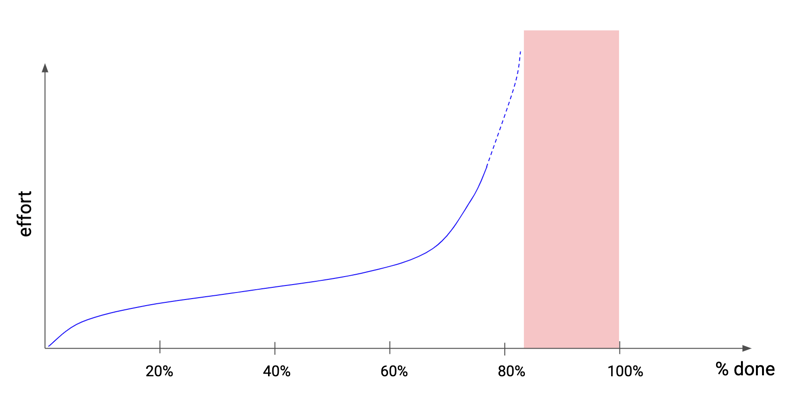Your Robots Will Fail
Robots and Humans are Alike - We All Fail
At InOrbit, our mission is to accelerate the adoption of robotics at scale. After talking to 100+ robotics companies, from startups to companies with billions of dollars in revenue, with all types of autonomous robots, we’ve reached an inescapable conclusion: they will all fail.
We’re not saying the companies will go out of business (although, sadly, many have in recent years). Rather, every robot will experience failures, in some cases multiple times per day or per hour. While a few of these failures may be catastrophic (and occasionally hilarious), like steering into a pond, getting stuck next to a trash can, or suddenly catching on fire, many errors are recoverable. The most frequent failures are what we call autonomy exceptions, where a robot finds itself in a situation that falls just outside its operating parameters.
At the 2015 DARPA Robotics Challenge finals, the most-viewed video from the event was not about the winning team that could navigate a series of robotics challenges like getting out of a car, opening a door, gripping a drill or climbing a set of stairs. It was a video compilation of all of the robots failing and falling down during the course of the competition (see below).
Future generations will likely see these videos as a historical record of the progress of robotics, similar to how we all watched black-and-white film coverage of people’s attempts (and failures) of building a flying machine.
We also suspect that robots are failing a whole lot more than get reported officially. Late at night in dimly-lit bars, roboticists share with each other in hushed tones numerous stories about the shortcomings of their robots. Here are a few that we have heard about or have seen play out on our platform::
- A robot at a retail store got lost and wandered into the women’s bathroom.
- A robot working in a factory was “protected” by pallets and tape, but then ended up not being able to get out of the area.
- A robot’s computer vision mis-identified a trash can on the floor as a similar robot, and it stopped while attempting to communicate with the trash can.
- A robot with 4% battery life didn’t realize it needed to return to its charging station and bravely continued on its mission, until it ran out of juice and became an expensive paperweight.
There are dozens of reasons for autonomy exceptions, especially when working in dynamically changing environments. Paths can suddenly get blocked, preventing robots from maneuvering safely. Poor network connectivity or dead spots prevent communications between a robot and operations center. Often, robots get lost simply because they think they are in the correct spot, but they’re feet (or yards) away from where they’re supposed to be.
At InOrbit, we’ve made failure a central part of our business model. Not because we’re pessimists or masochists, but because we believe that people (and robots, too) need to fail in order to succeed. Many books have been written about learning from failure - two of our favorites include “The Other ‘F’ Word: How Smart Leaders, Teams, and Entrepreneurs Put Failure to Work” (by John Danner) and “It’s Easier to Succeed Than Fail” (by S. Truett Cathy, the founder of Chick-fil-a). Too many times, we’ve seen cases where business leaders become so risk-averse, so afraid of failure, that this inaction leads them down a path of failure.
In the case of robots, it’s important to build resilience to failure into the model. Hope (that it will never fail) is not a strategy. During your company’s journey in developing robots, you may get to a point where a robot works great in the lab, but when faced with the chaotic real world the failure rate increases. You’re not alone; many companies face the following situation:

This is what we call the Autonomy Gap. You may hit the gap at 85%, 95% or even 98%, but for many applications that’s just not good enough. InOrbit allows you to bridge the autonomy gap by combining the best of humans, robots and cloud. Our platform enables robotics companies to build a virtuous loop that we refer to as Measure > Learn > Act, complementing the robot capabilities with humans to cover corner cases and data collection/analysis to help “flatten the curve” (too soon?).
Through this continuous improvement process, you will become better at figuring out why the robot couldn’t maneuver around that trash can. A robot stuck in the corner because its battery died will not fail the next time, because a robot operator will get an alert that indicates a low-power situation and send the robot back to its dock. Perhaps next time, the robot will be able to do it on its own.
When developing a robot or deploying a fleet of robots, the key to avoiding or limiting failures is to set up a resilient system that can react to incidents. This system may include local or remote intervention, real-time monitoring, regular maintenance checks or over-the-air software updates. InOrbit provides these features and more as part of our platform for robot operations or RobOps.
We can help your company achieve its goals to reduce the number of robot failures - send us an email or set up a demo with our team to see InOrbit in action.